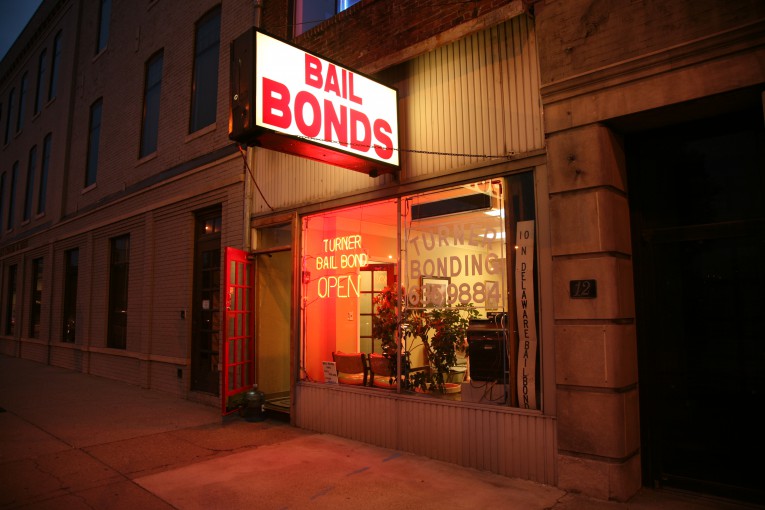

A lot of people don’t really understand bail reform. The purpose of bail reform is not to eliminate pre-trial custody. But rather it is to change the way that pre-trial custody is determined, from cash bail to a quantifiable risk assessment.
The current system sets a bail schedule based on a few factors and if the individual can afford to put down their ten percent, they are released from custody. If they cannot, they sit in custody until their trial.
That system doesn’t make sense. Just because an individual can afford to put down the money or has family that can, does not necessarily mean that they are not a risk to public safety. Bail reform therefore seeks to eliminate the possibility of “buying” one’s way to pre-trial freedom and to establish quantifiable risk standards which determine whether someone should be released or held for trial.
Can the new system err? Of course. But then again, people on bail miss court dates and re-offend, as well.
It appears that California is about to pass comprehensive bail reform – the question now is whether that bill goes far enough. The answer appears to be: depends on whom you ask.
There was a compromise that allowed the bill that would end cash bail in California to move forward by next fall. The changes made to the bill helped it clear a key committee, but it left some  critics of bail unable to support it.
critics of bail unable to support it.
The ACLU, for example, pulled its support. It is not opposed to the bill – it’s now neutral, supporting that the new version will “effectively eliminate the exploitative and abusive commercial bail industry that preys on low-income people, including a disproportionate number of Black and brown people.”
They further commend Senator Robert Hertzberg “for advancing a bill that results in such a remarkable achievement.”
On the other hand, they argue: “SB 10 needs to go further to be the model for pretrial justice and racial equity that we are working towards. Any model must include data collection that allows independent analysis to identify racial bias in the system, supports the use of independent pretrial service agencies recognized as the best practice in pretrial justice, and ensures stronger due process protections for all Californians, no matter where they live.”
But the ACLU might be the lone holdouts.
Senator Hertzberg called the measure “just and fair” – or at least more so than the current system.
“It’s been challenging making this fundamental sea change in the criminal justice system in California that discriminates against people who are poor,” Senator Hertzberg said. “That’s the issue: We have, baked in our law … a system that punishes people, that takes away their liberty because they have less money in their pocket.”
Under the bill, the current cash bail system will end October 2019 and be replaced by a pretrial release system.
Each county will be charged with coming up with its own system, including which risk assessment tool to use in order to determine whether the risk for release is low, medium or high.
Most nonviolent offenders accused of misdemeanors would be released in 12 hours. Low risk offenders would be released on their own recognizance, without any supervision. Medium-risk defendants could be either released or detained depending on the county. And defenders charged with violent crimes or deemed high risk would remain in custody.
That is what we have been arguing for – if people really pose a risk, no amount of bail will change that. This allows the vast majority of people who pose no risk to simply be released. If they prove they cannot handle that responsibility, then they should have their OR revoked and be remanded to custody. But at least under those conditions, the decision will be made based on actual conduct, rather than ability to pay.
I get it, the ACLU wants more. But this is a good start. It gets us moving in the right direction. It will be easier to add tweaks to an existing program than to make fundamental change.
Others who have supported bail reform are celebrating.
Assemblymember Rob Bonta argues that the bill strikes the middle ground.
“Some of you may have heard rumors along the way to the effect that we were watering down,” Assemblymember Bonta said. “I say take another look.
“From the beginning, we said we were going to reform money bail,” he added, “and with this bill we are actually abolishing it. I would say that is significant fundamental reform.”
Assemblymember Bonta said the bill’s changes would also protect public safety and “make sure nonviolent, low-risk defendants are not unnecessarily locked in jail and those who are truly a safety risk to others are held in custody.”
Of course the bail industry opposes the changes and will challenge it in court if it becomes law. Frankly, I don’t think they will be successful, but they will certainly try.
For me, the basics of this program are right. We will change from a cash-based system, where those who can afford it are freed and those who cannot are kept in custody, to one based on science and actual risk assessment.
The inequity of the cash bail system has acted as a serious disadvantage to those kept in custody. People in custody would lose their jobs, their homes, sometimes their families. They were pressured to take worse plea deals in order to rectify the situation. Many would go into debt in order to pay the bail. This eliminates all of that.
Are there risks? Of course. We have to make sure we are using the risk assessment tools properly. There is always a chance that someone released can commit a horrific crime. Then again – under the old system, someone out on bail with no risk assessment could do the same thing.
—David M. Greenwald reporting
Get Tickets To Vanguard’s Immigration Rights Event

I am very enthusiastic about this change, not as a panacea, but as a step in the right direction.